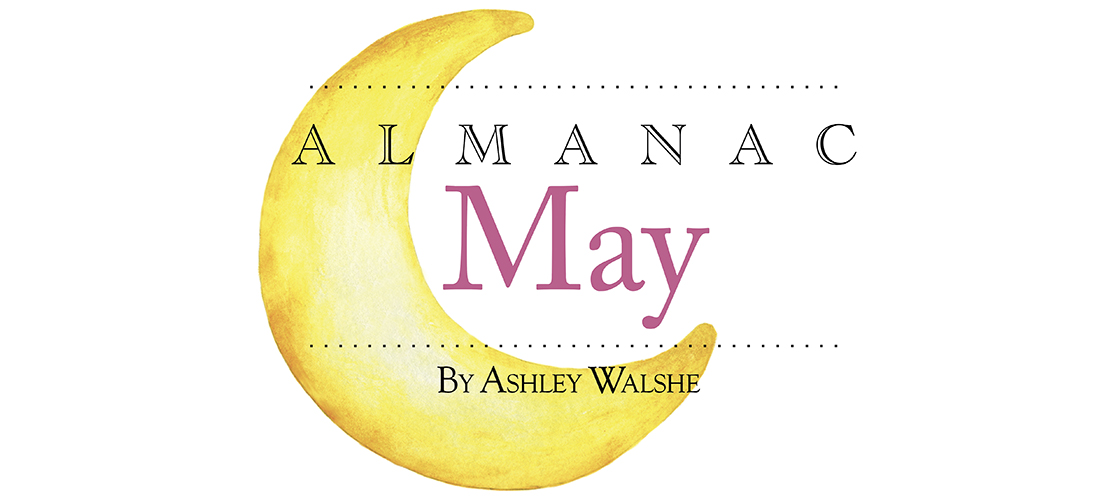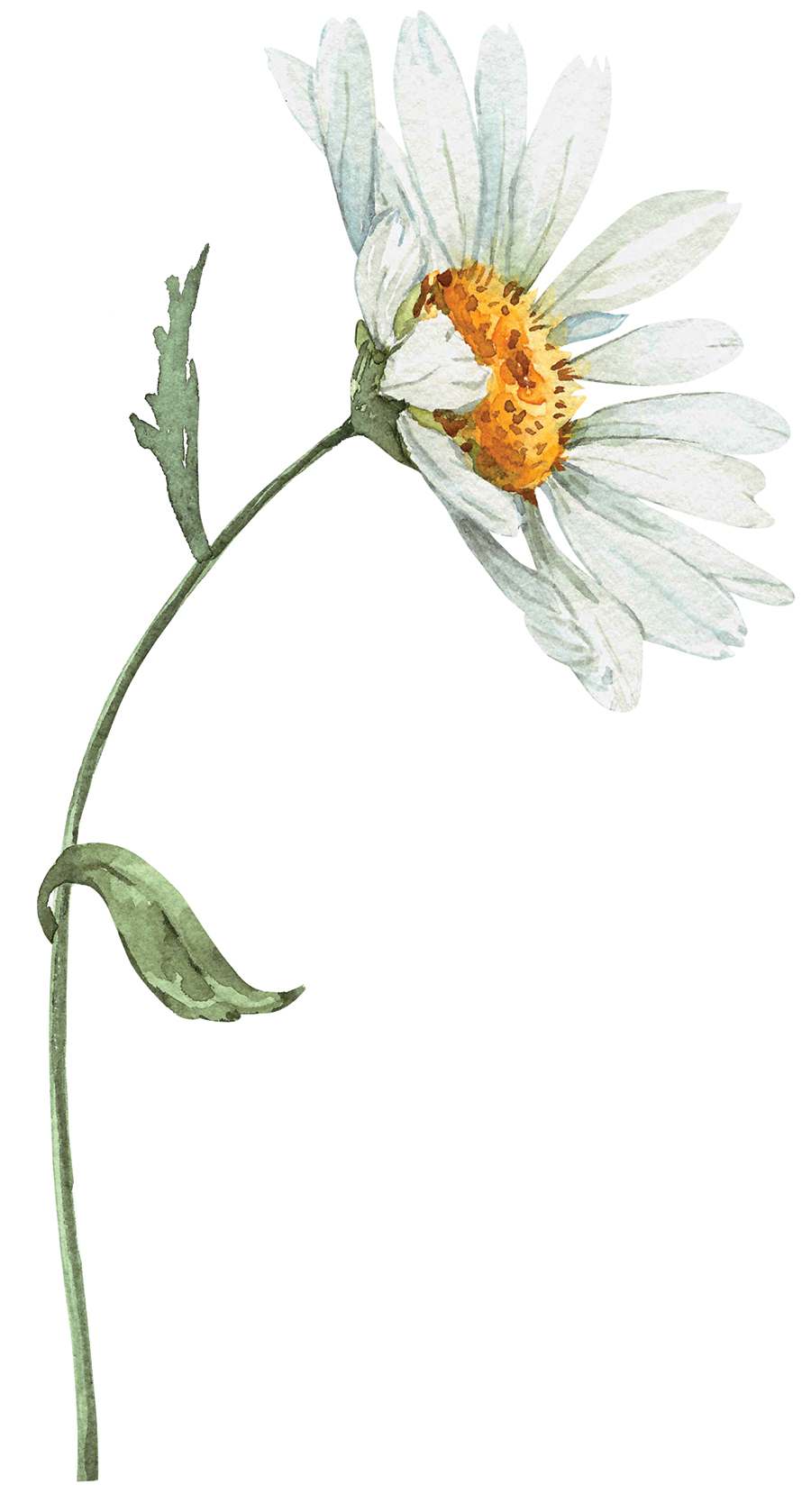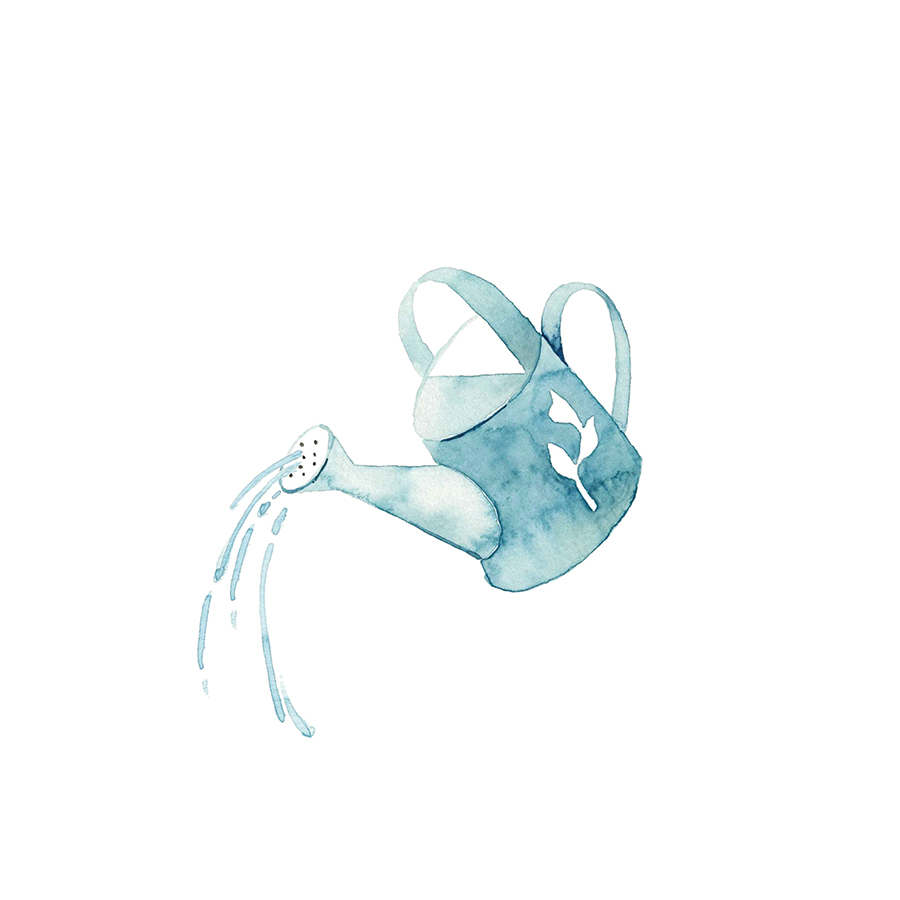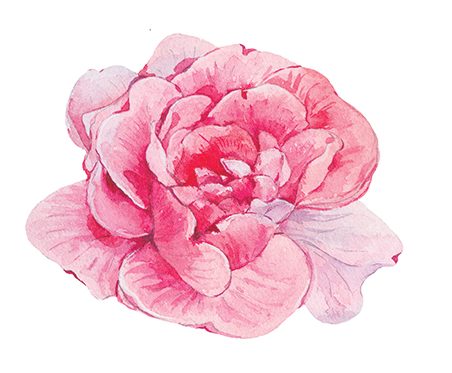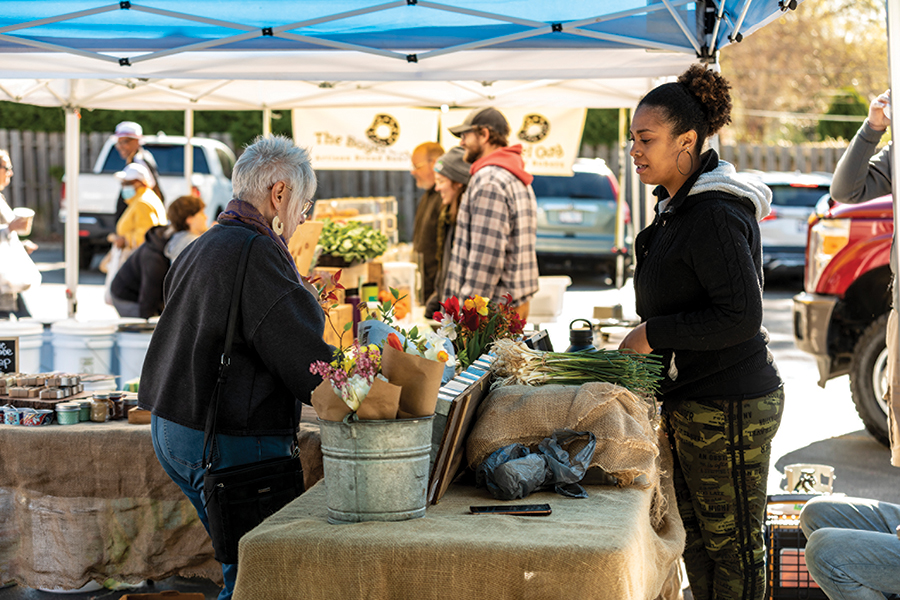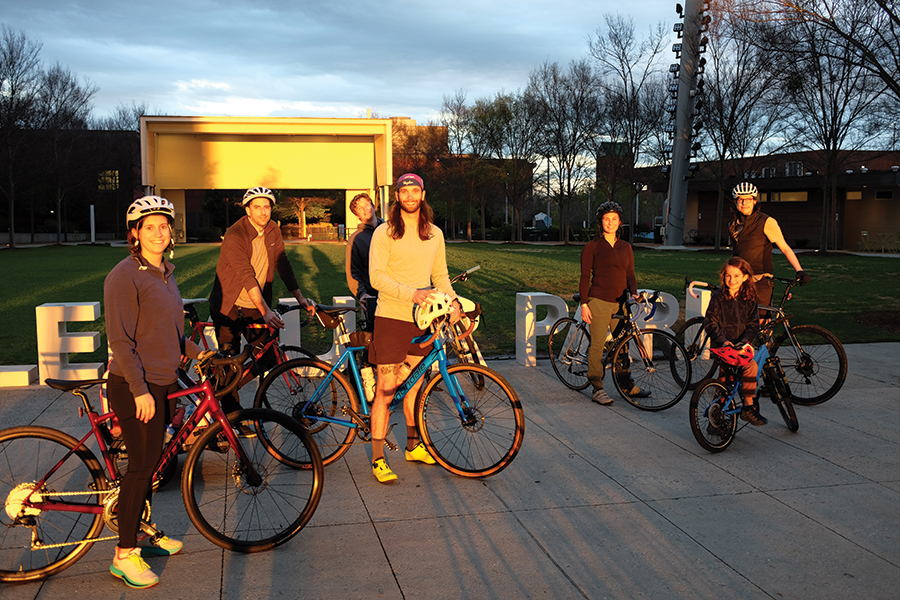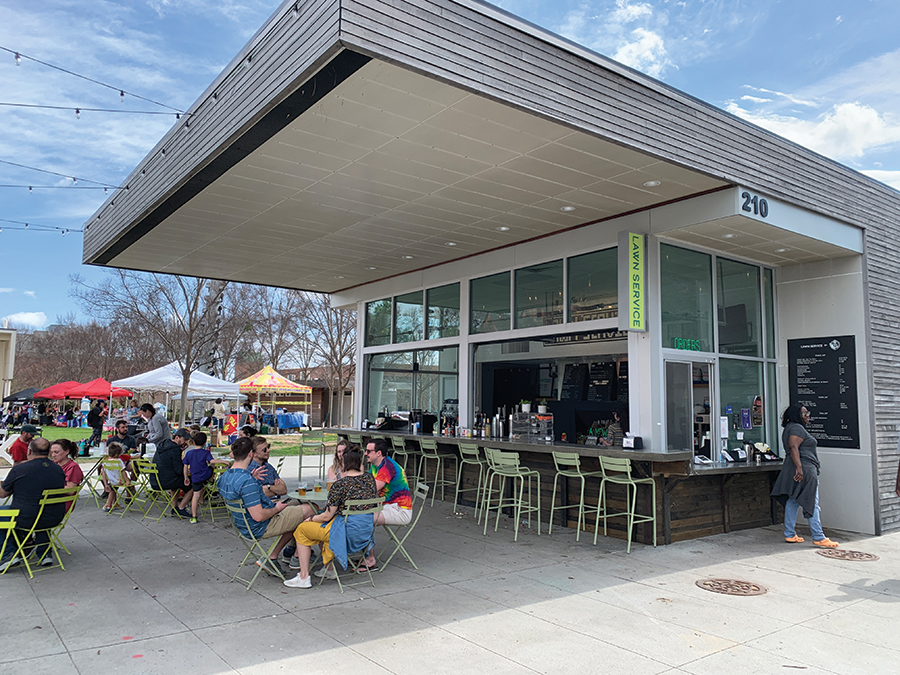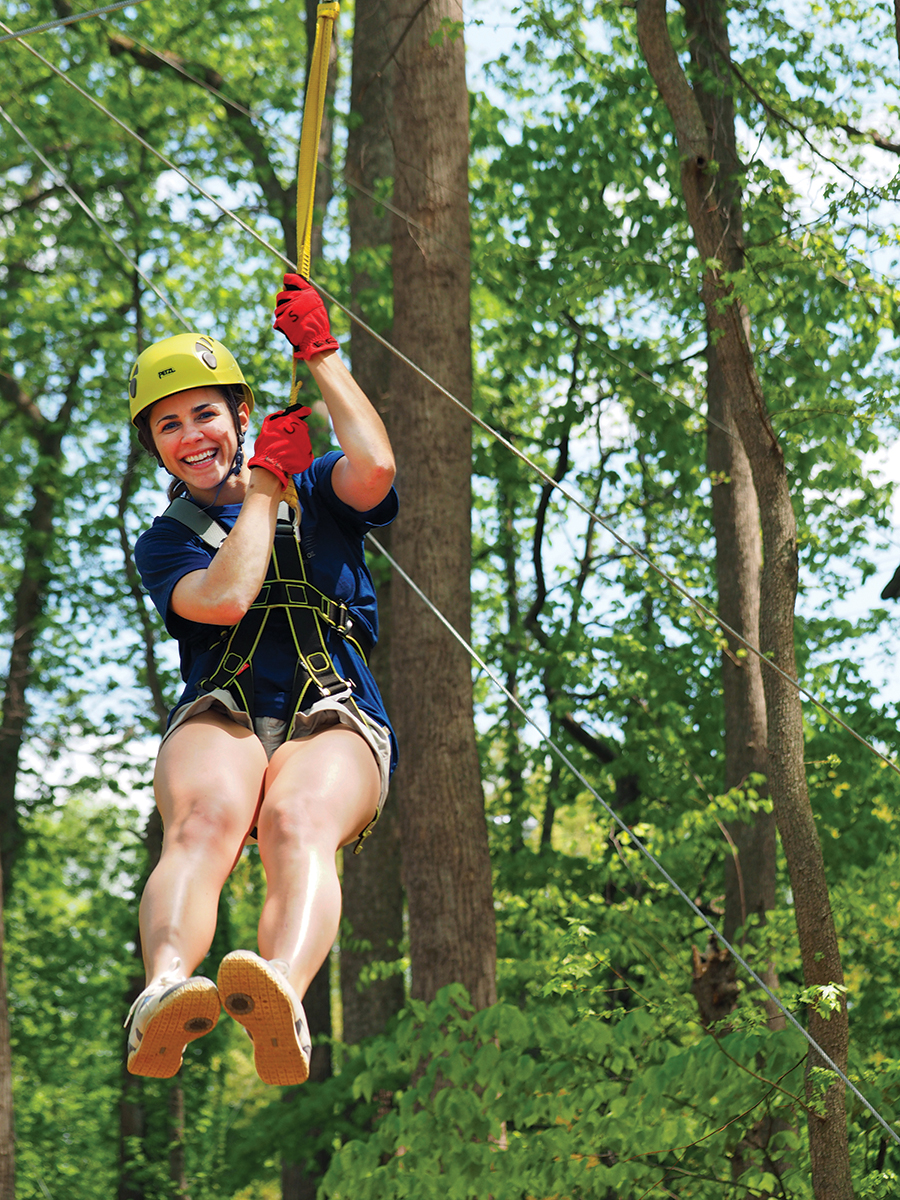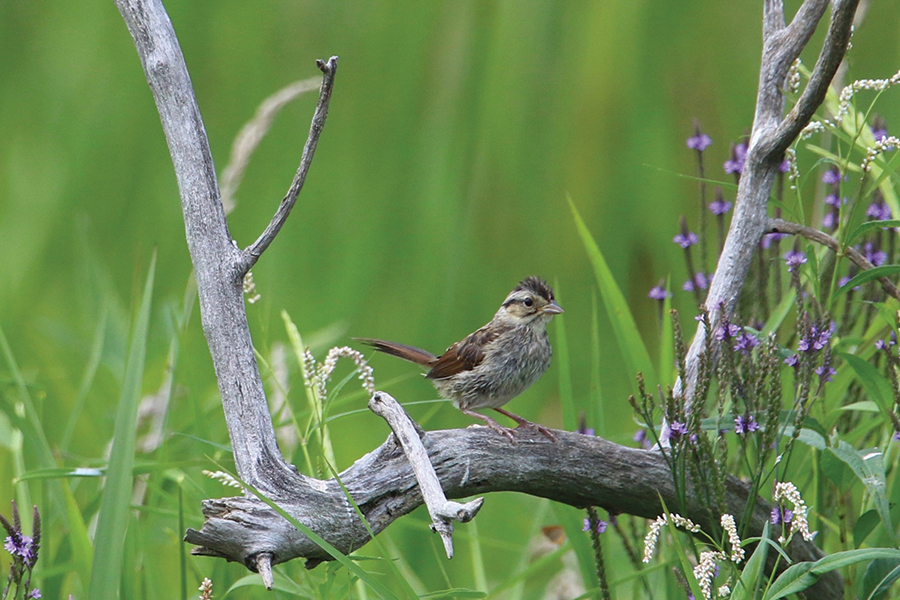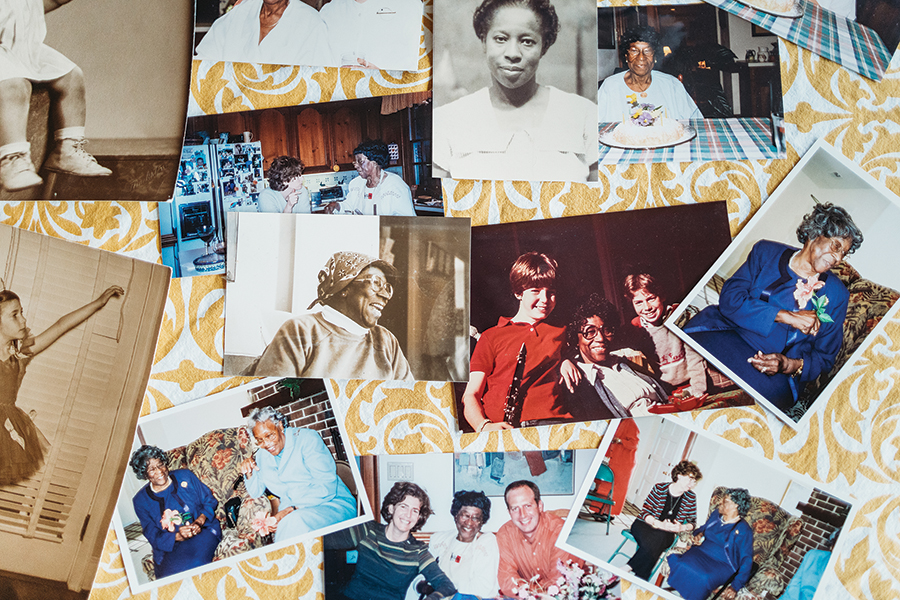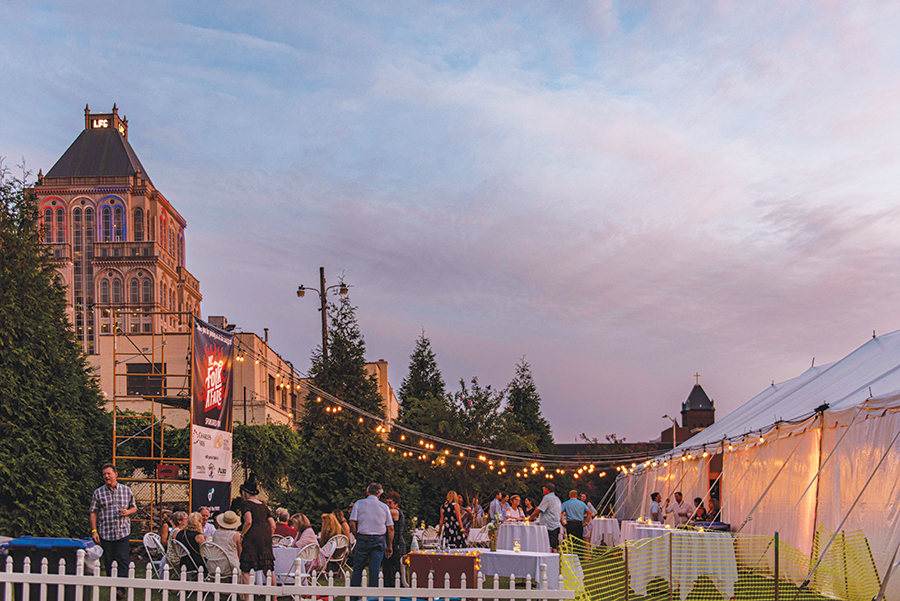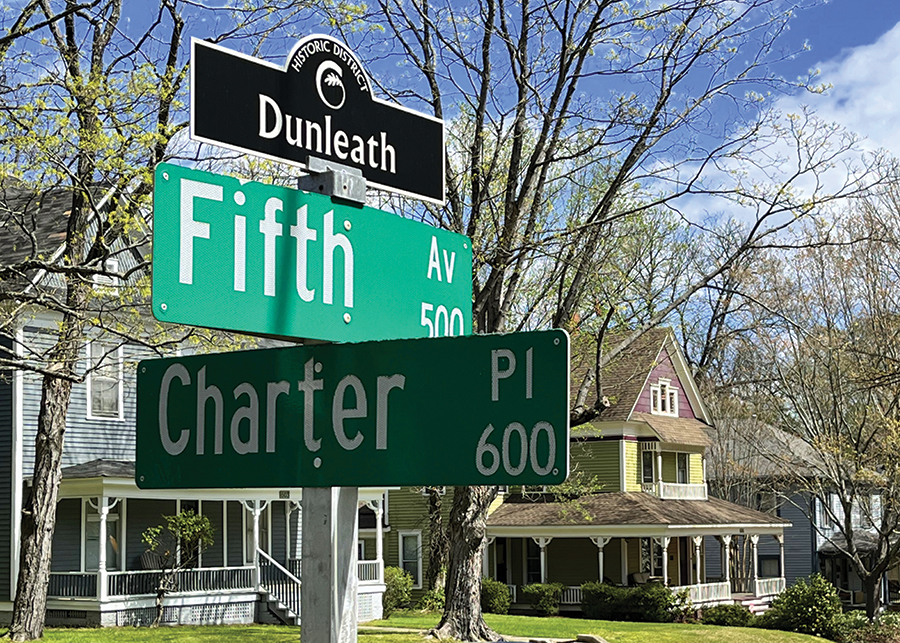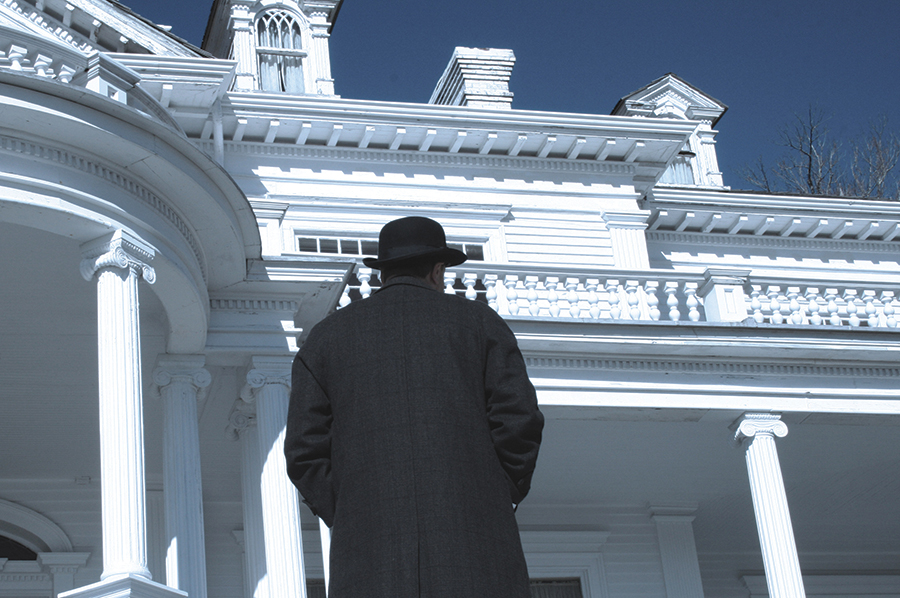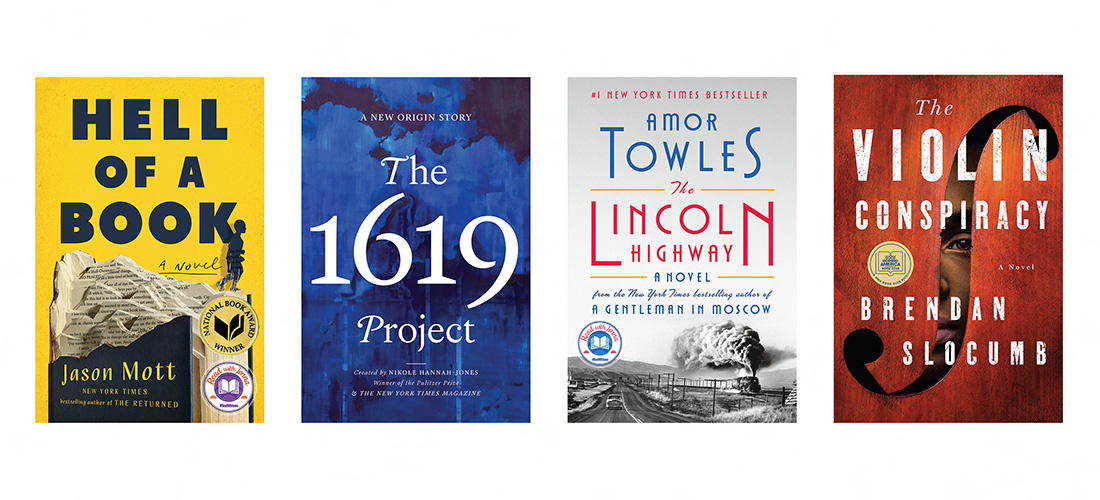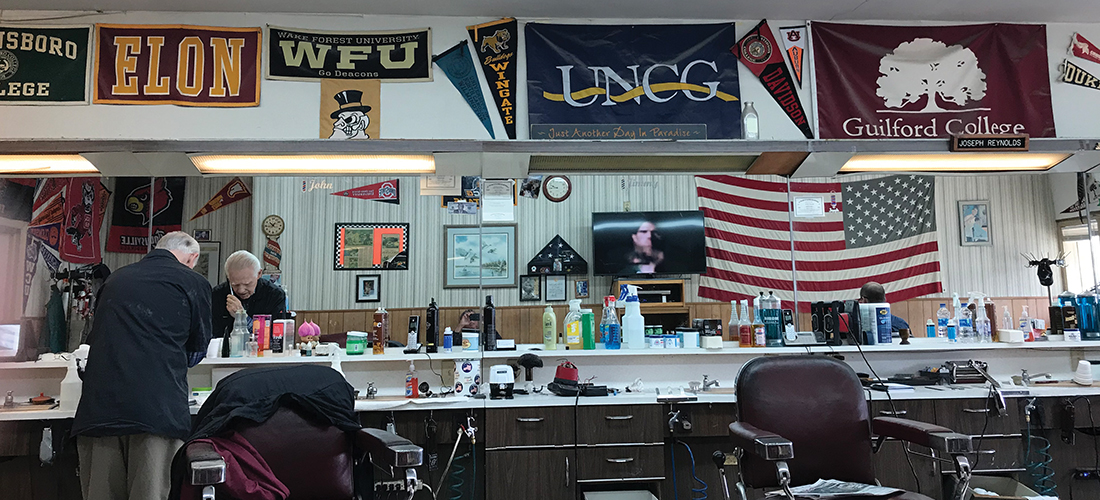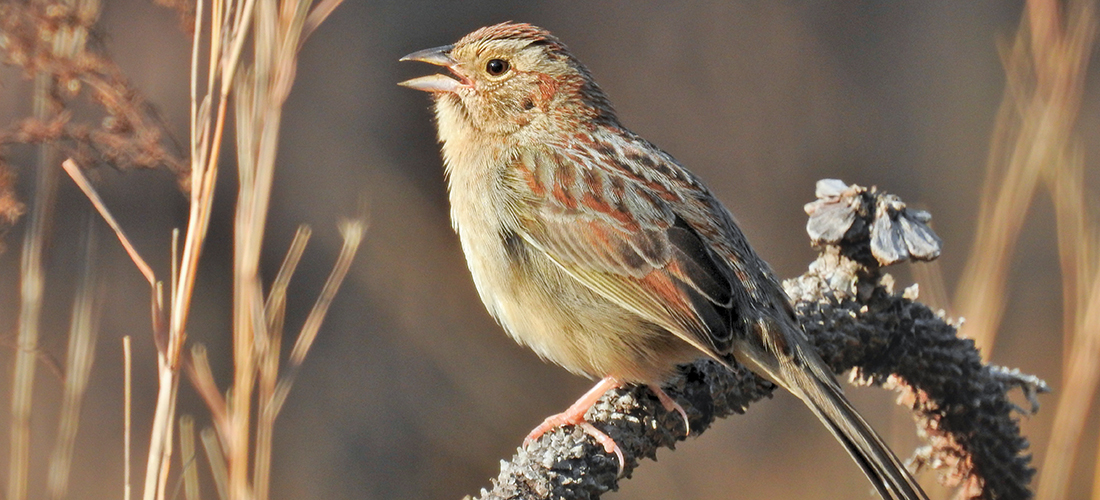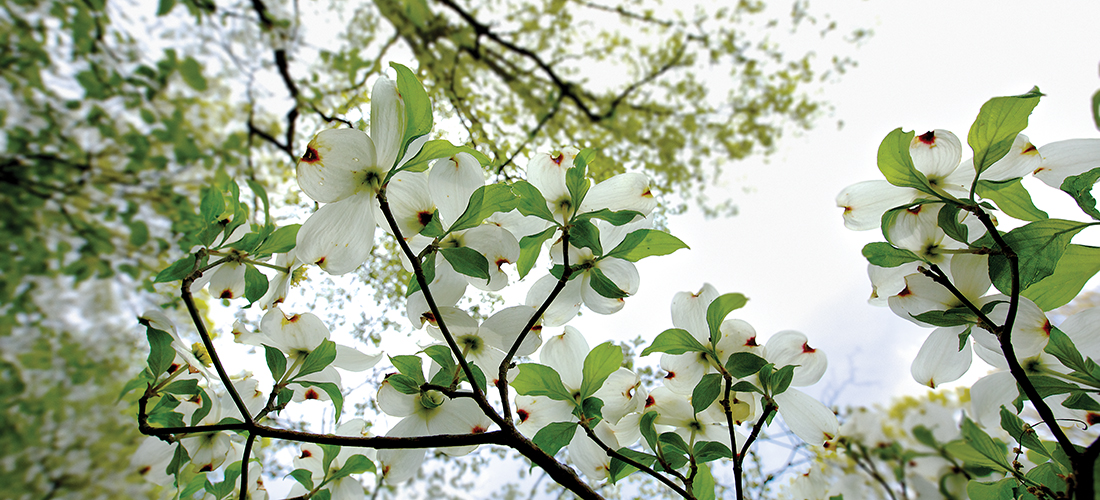In a city of trees, spring heralds a rhapsody of foliage and hope
By Ross Howell Jr. • Photographs by Mark Wagoner
When is the best time to plant a tree? Twenty years ago. When is the next best time? Now.
— Chinese saying, in The Overstory, a novel by Richard Powers
Lately on walks with our rescue dog, Sprinkles, I’ve been thinking about the trees in Fisher Park, the neighborhood where my wife, Mary Leigh, and I live.
Enormous willow oaks, maples, big pecan trees and Southern magnolias line our streets and yards, shading dogwoods, redbuds and crape myrtles. Thick beeches guard the park’s tributary of Buffalo Creek, and tall gums scatter walkways with their prickly, annoying balls.
The trees are serene and magical.
And old.
A quality I share with the trees. We’re approaching the end of our natural lives, becoming unsteady and expensive to maintain.
Being a 2-year-old dog, Sprinkles devotes no attention to the passage of time — the present moment suiting her just fine. She heeds the trees not at all unless a squirrel happens to scramble up one.
But in the 12 years Mary Leigh and I have lived in Fisher Park, thunderstorms have brought down enormous willow oaks, one crashing on the property owner’s car and splintering a neighbor’s redbud tree. Old age has claimed splendid white oaks. Disease has laid low big maples and dogwoods. Ice storms have wreaked havoc, uprooting oaks, gums, beeches, hemlocks and ash trees and shattering magnolias in the park.
Circle of life, right? What can you do?
Turns out, a lot.
Sally Pagliai is the owner of Studio Pagliai Landscape and Garden Design in Greensboro. A native Californian, she holds a degree in landscape architecture from California Polytechnic State University in San Luis Obispo.
Not long ago, she was hired for a project in the Montibello neighborhood, located off Horse Pen Creek Road.
“While there were strict rules about landscaping, the homeowners weren’t abiding by them — some had placed garden gnomes, whirligigs or pink flamingos in front of their houses,” Pagliai says. The homeowners’ association brought her in to review the situation and to make recommendations for rules that would improve neighborhood aesthetics.
It was a hot July day when Pagliai first visited Montibello. As she drove in, she was impressed with how attractively the entrance was landscaped with trees and shrubs.
“But once I got inside the development,” she says, “it was like a moonscape. The landscape was bleached, scorched by the summer heat. There was no canopy of trees.”
Pagliai knew what Montibello needed wasn’t another set of rules. What it needed was a forest.
But how could she convince them?
“When I was growing up in California, we used to visit Carmel,” Pagliai says. “There were all these funky little houses.” She explains that as the town grew, homeowners made the decision to preserve the trees, even ones growing in the middle of some of the streets.
“Now the trees make the place unique, and those same funky little houses today are remarkably expensive,” Pagliai says.
She would make an economic argument to Montibello’s homeowners, demonstrating how trees can increase home values, augmented by information about the value of trees environmentally.
Trees clean the air. They significantly reduce summer temperatures in urban areas and lower electrical bills. They absorb runoff from streets and sidewalks, reducing flooding.
And they’re beautiful.
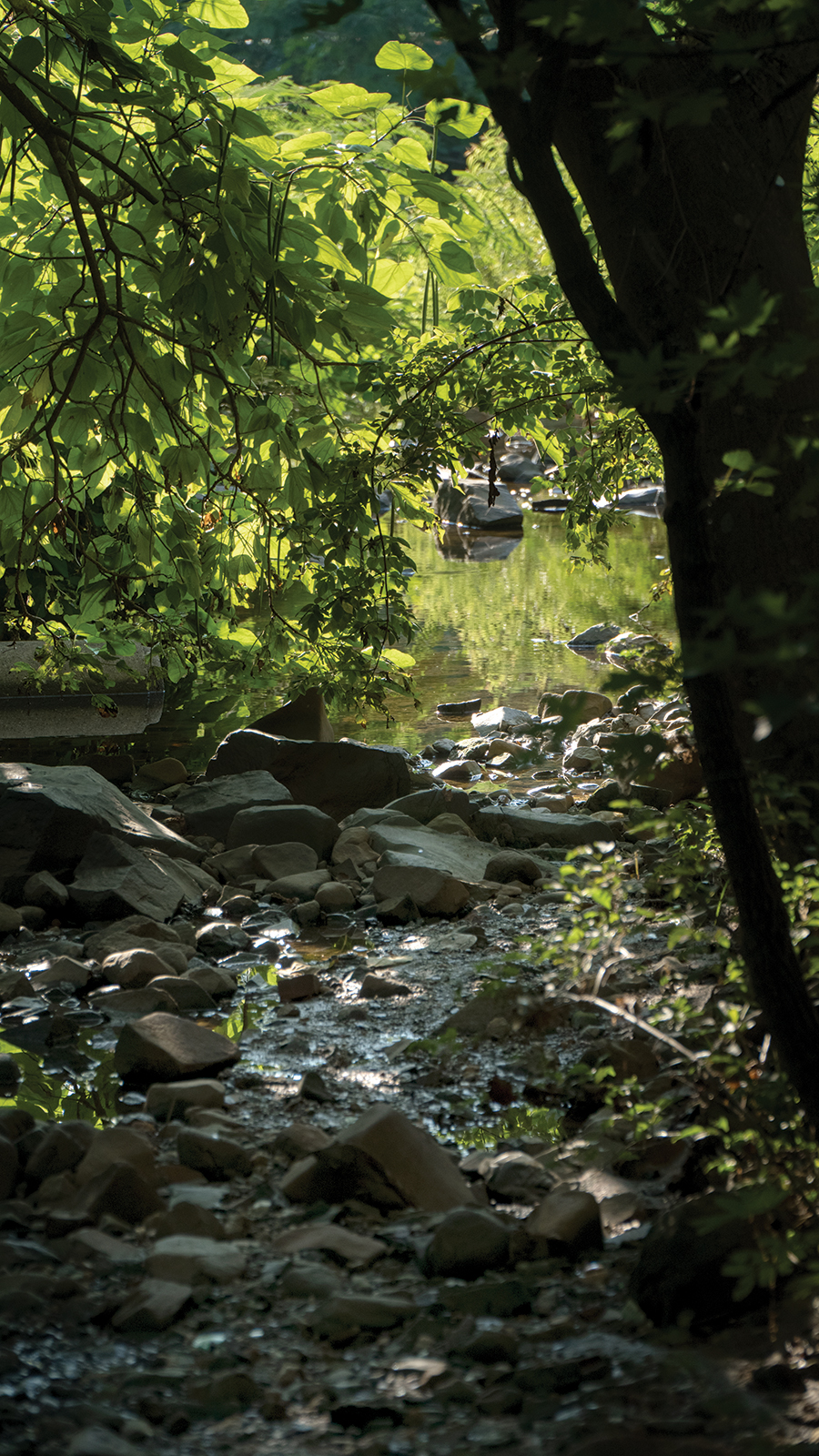
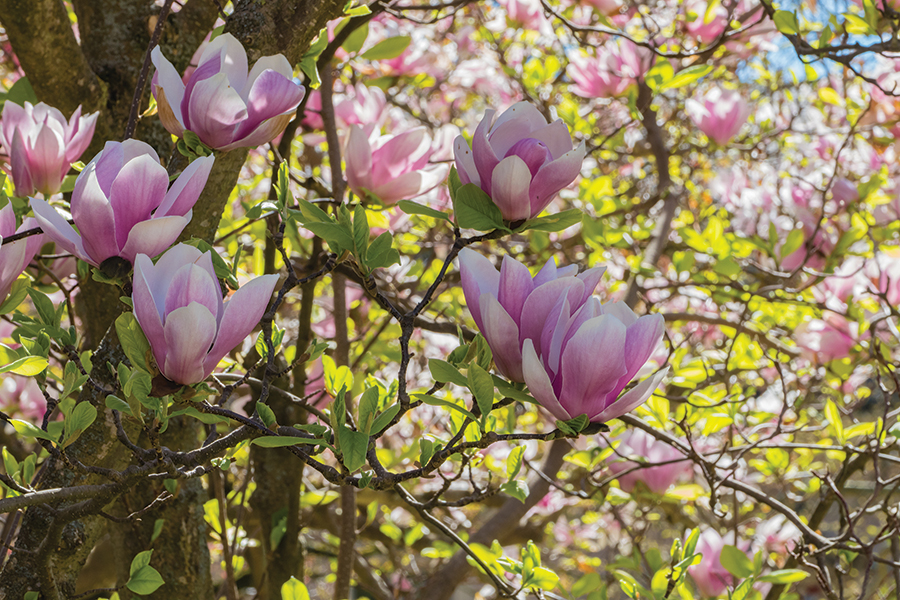
“When you consider their majesty, their sculptural and textural complexity,” Pagliai says, “trees represent the very best of nature.”
Pagliai presented a comprehensive design plan that explained the economic and aesthetic benefits of planting hundreds of trees — evergreen and deciduous — that was reviewed by a neighborhood committee. They approved.
“Montibello ended up spending more than $100,000,” Pagliai says.
Trees were planted in stages at different times of year when various species enjoyed optimal chances of survival. The added benefit? The economic impact on individual homeowners was spread out over time.
Improvement in property values and quality of life in the neighborhood has been profound.
A more recent Pagliai project also involved the planting of hundreds of trees.
“The Healing Gardens at Cone Health Cancer Center are really the work of my heart,” Pagliai says. “I lost both my father and a husband to cancer.”
When her father was being treated at the Stanford Cancer Institute in California, Pagliai could find solace outside the facility in a garden with trees.
“That was real salvation,” Pagliai says. “Trees are so life-giving.”
But at the time Pagliai’s husband, Stefano, was being treated at Cone Cancer Center, there was no garden at all.
“The earth next to the facility was barren and toxic, with rainwater flooding from the parking garage into Buffalo Creek,” she says. Worse, the area was laden with trash and concrete construction debris.
“I’d be in a room with my husband, who was just so sick,” Pagliai continues, “and there was no place outside where I could find any peace.”
Volunteering her own time, Pagliai began sketching out plans for the Healing Gardens and fund-raising began.
The first garden installation was a barrier of 234 trees planted along Wendover Avenue. The trees muffle traffic sounds from the busy highway and provide a living green wall for the sanctuary just beyond Buffalo Creek.
Within the Healing Gardens, volunteers have planted more than 350 additional trees, including native river birch (Betula nigra), bald cypress (Taxodium distichum), sweet bay magnolia (Magnolia virginiana), tupelo (Nyssa sylvatica), red maple (Acer rubrum) and a variety of wax myrtles and cedars.
At the entrance to the gardens, Pagliai created a row of columnar English oaks (Quercus robur), compact trees that grow narrow and upright — excellent for tight spaces. Entering the garden, the oaks offer separation from the concrete parking lots and sidewalks.
“Trees are some of my best friends,” Pagliai concludes. “They’ve brought me peace. They bring me joy.”
Randal Romie, president of Designature, Landscape Architects ASLA, is a resident of Sunset Hills.
“People forget that the 100-year-old willow oaks falling over in our neighborhood were once the woods that drew people here to build houses,” Romie says. He explains that with more roadways and sidewalks and the increased number of houses, the oaks’ broad root systems no longer have access to the abundance of nutrients available in natural woodlands.
“They’re not going to be 200-year-old trees,” Romie says. “And when we lose them, we’re losing a sense of time.”
But Romie and other Sunset Hills residents now have money in their neighborhood association to buy new trees for homeowners who want them and are willing to pay a small deposit to the fund. So far, the association has supplied residents with some 30 native trees.
North Carolina native trees are a passion for Romie. For him, they’re an essential element in a millennia-old ecosystem of plants and creatures always held in spiritual reverence by Native American cultures.
“We’re part of nature,” Romie says. “When we connect with nature, we feel better. It’s like home.”
In Romie’s experience, people find neighborhoods with a canopy of trees more attractive than neighborhoods without them.
“All we’re doing is getting back to what Greensboro is famous for — neighborhoods like Fisher Park, Lindley Park, where there are trees in every yard,” Romie says. “They’re what make Greensboro green.”
Beyond his efforts in Sunset Hills, Romie has devoted some 30 years of volunteer work to Greensboro Beautiful and has served as co-chair of the urban forestry committee. Urban forestry is a relatively new concept, where trees are seen as critical elements of a healthy urban environment. In some North Carolina cities, urban foresters plant and maintain trees, support appropriate tree selection and forest preservation, and conduct research and education, promoting the benefits trees provide.
Greensboro Beautiful is a nonprofit organization supported by private funds from individuals, corporations and foundations. Its budget assists public gardens like the Greensboro Arboretum and supports a variety of tree-planting and education programs, like NeighborWoods. Through the parks and recreation department, the city of Greensboro provides full-time staff, office space and equipment.
In this public-private partnership, the city field operations department typically digs the holes for tree planting and the planning department provides the expertise of city arborist Judson Clinton to select proper varieties and coordinate with public utilities.
“I may be the planning force behind a project,” says Clinton, who studied forestry, natural resources and silviculture at Purdue University, “but Greensboro Beautiful is really the driving force.”
Greensboro Beautiful provides volunteers, supplies and plant material, while master gardeners help with instruction. As many as 300 volunteers may show up for a planting program — people from all walks and stages of life.
Past special events include an Arbor Day celebration, when Greensboro Beautiful organized more than 250 volunteers to plant 150 trees in the Warnersville neighborhood, the oldest African American community in Greensboro.
After a 2018 tornado cut a path of destruction through the Kings Forest neighborhood and its park, Greensboro Beautiful awarded the area with a 2019 NeighborWoods community tree planting. Volunteers replanted trees throughout the neighborhood and park, supplying additional trees to property owners who requested them.
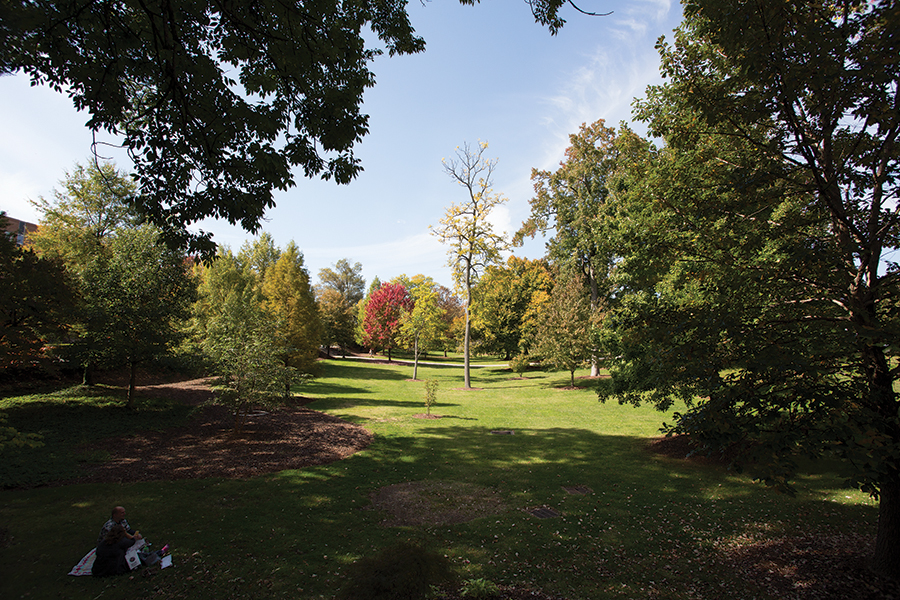
In 2021 the Audubon Society teamed up with the NeighborWoods program to plant 150 canopy and understory trees in the Friendly Homes neighborhood and surrounding park, and along the Benjamin Parkway Greenway. Many ash trees in the area had been killed by the emerald ash borer, and other canopy trees had suffered dieback due to age and drought.
A new planting initiative was announced March 1, when the United Way of Greater Greensboro opened its centennial celebration by planting a tree at its Yanceyville Street headquarters.
“We’ve partnered with Greensboro Beautiful and Greensboro Housing Authority to plant 100 trees,” says Michael Cottingham, United Way’s vice president, marketing and communications. “In addition to our continued work to help people leave poverty, we hope these trees will serve as a symbolic reminder of the lasting impact we create when we work together to help others.”
Another friend of trees is Elizabeth Link, a manager in the planning department of the city of Greensboro. Among her responsibilities is administering tree planting regulations for new commercial and multifamily residential construction. She holds a landscape architecture degree from North Carolina A&T State University.
She’s also a 25-year resident of Lindley Park.
“We’ve had many old willow oaks die or get knocked down in storms,” Link says.
At her house two old oak trees came down, especially significant because they shaded the house’s southern exposure.
“Our summer electric bills went up,” Link says. And she noticed more standing water after rainfall because the root systems no longer absorbed it.
Link and her husband subsequently replanted trees — a white oak and a red oak. But it will take 30 years for their effects to be felt.
“That’s why it’s so important for neighborhoods to protect their trees,” Link says.
When people ask her about trees, she says she often finds herself telling them what not to do.
“Don’t use herbicides of any kind. Don’t pile up mulch around the trunk of a tree. Don’t let vines climb it. Don’t drive your car over its roots,” Link says.
“But there’s one thing I always tell them,” she adds. “Trees are good.”
She pauses, then repeats, “Trees are good.”
Still, for all their benefits, trees make some homeowners anxious.
“I understand the concern people have with big trees around the house,” says Drew Horne, manager at Guilford Garden Center. “There’s debris and sometimes fallen branches after a storm.”
“But that’s just part of the risk,” Horne continues. He believes that whenever people coalesce with nature, there’s risk.
“When you plant a tree, you’re not planting it for yourself,” Horne says. “It’s like a gift you make to the future.”
One evening when I was doing research for this piece, Sprinkles and I took another walk in Fisher Park. We were emerging from the woods’ edge, and I notice lights in the windows of the Julian Price house.
Movement catches my eye. A red-shouldered hawk settles on the limb of a dogwood just feet away. I stop in my tracks.
The hawk scans the ground, then drops to the forest floor right next to us.
Even Sprinkles stands still.
The hawk cocks its wild, pitiless head and looks right at me.
Then it lifts its wings, snagging with its talons a vole that had been invisible till that moment, and flies off.
With the hawk now in past tense, Sprinkles tugs at her lead, ready to move on.
But I linger for a moment, in a cathedral of trees. OH
Ross Howell Jr. is a freelance writer. For information on the gardens, activities and volunteer opportunities at Greensboro Beautiful, visit www.greensborobeautiful.org.
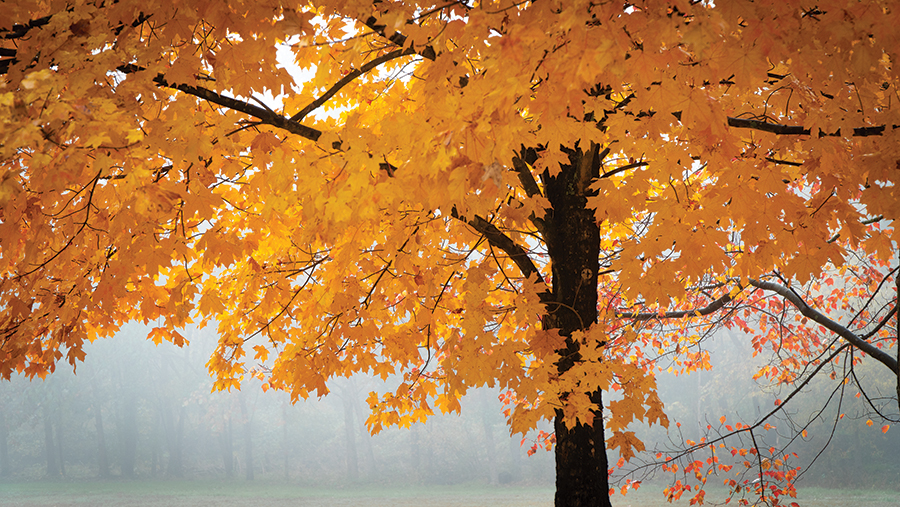
Treasure Trees
In the past, Guilford County established a Treasure Tree Program to recognize the largest, rarest and oldest tree specimens in the area. The purpose was to raise public awareness of these valuable and irreplaceable living things, increase owners’ awareness of their importance and encourage good stewardship. The program was also designed to help protect all trees in our region from indiscriminate removal or damage due to development and urbanization.
Here are examples. You might want to check trees in your own neighborhood. You may discover a treasure of your own.
American Beech (Fagus grandiflora), North Oaks Subdivision, 126 feet tall, crown spread 75 feet, trunk diameter 43 inches.
American Elm (Ulmus americana), Forest Valley Drive, 126 feet tall, crown spread 45 feet, trunk diameter 26.9 inches.
Bald Cypress (Taxodium distichum), Twin Lakes Park, 98 feet tall, crown spread 26.6 feet, trunk diameter 34.6 inches.
Bottlebush Buckeye (Aesculus parviflora), Kello Drive, 18 feet tall, crown spread 18 feet, trunk diameter 8.3 inches.
Black Gum (Nyssa sylvatica), Twin Lakes Park, height of 87 feet, crown spread 55 feet, trunk diameter 39.5 inches.
Dogwood (Cornus florida), Woodvale Drive, 28 feet tall, crown spread 23 feet, trunk diameter 23 inches.
Eastern Redbud (Cercis canadensis), Trosper Road, 40 feet tall, crown spread 9 feet, trunk diameter 9 inches.
Green Ash (Fraxinus pennsylvanica), Twin Lakes Park, 103 feet tall, crown spread 35.8 feet, trunk diameter 36.8 inches.
Loblolly Pine (Pinus taeda), High Meadows Court, 110 feet in height, crown spread 40.3 feet, trunk diameter 40.3 inches.
Northern Red Oak (Quercus rubra), North Church Street, 133 feet tall, crown spread 87.5 feet, trunk diameter 55.2 inches.
Pecan (Carya illinoensis), Williams Dairy Road, 94 feet tall, crown spread 112.5 feet, trunk diameter 43.25 inches.
Post Oak (Quercus stellata), Cypress Street, 84 feet tall, crown spread 84.5 feet, trunk diameter 50 inches.
Silver Maple (Acer saccharinum), West Friendly Avenue, 82.5 feet tall, crown spread 67.25 feet, trunk diameter 50.4 inches.
Tulip Poplar (Liriodendron tulipifera), Guilford College Road, 148 feet tall, crown spread 71 feet, trunk diameter 63.9 inches. Called “The Underground Railroad Tree,” it may date from the year 1713.
Weeping Willow (Salix babylonica), Twin Lakes Park, 60 feet tall, crown spread 54 feet, trunk diameter 50.4 inches.
White Oak (Quercus alba), North Church Street, 135 in height, crown spread 90.5 feet, trunk diameter 62.5 inches.
Willow Oak (Quercus phellos), Cypress Street, 138 feet tall, crown spread 84 feet, trunk diameter 62.5 inches.
For the complete Treasure Tree list, go to www.greensboro-nc.gov/departments/planning/learn-more-about/trees-and-urban-forestry/treasure-trees-program.
A convenient place near downtown Greensboro to see trees is Green Hill Cemetery. Walking tours are available through Friends of Green Hill Cemetery, a non-profit group that has identified some 700 tree varieties in the cemetery’s 51 acres. According to www.monumentaltrees.com, you’ll come across these big specimens, and more.
Shortleaf Pine (Pinus echinata), 78 feet tall and more than 85 years old.
Dawn Redwood (Metasequoia glyptostroboides), more than 50 feet tall.
Bigleaf Magnolia (Magnolia macrophylla), estimated to be 32 feet in height.
Northern Catalpa (Catalpa speciosa), height of about 66 feet, trunk diameter of nearly 48 inches. OH


